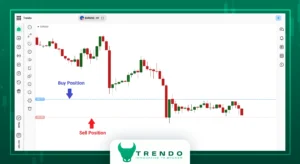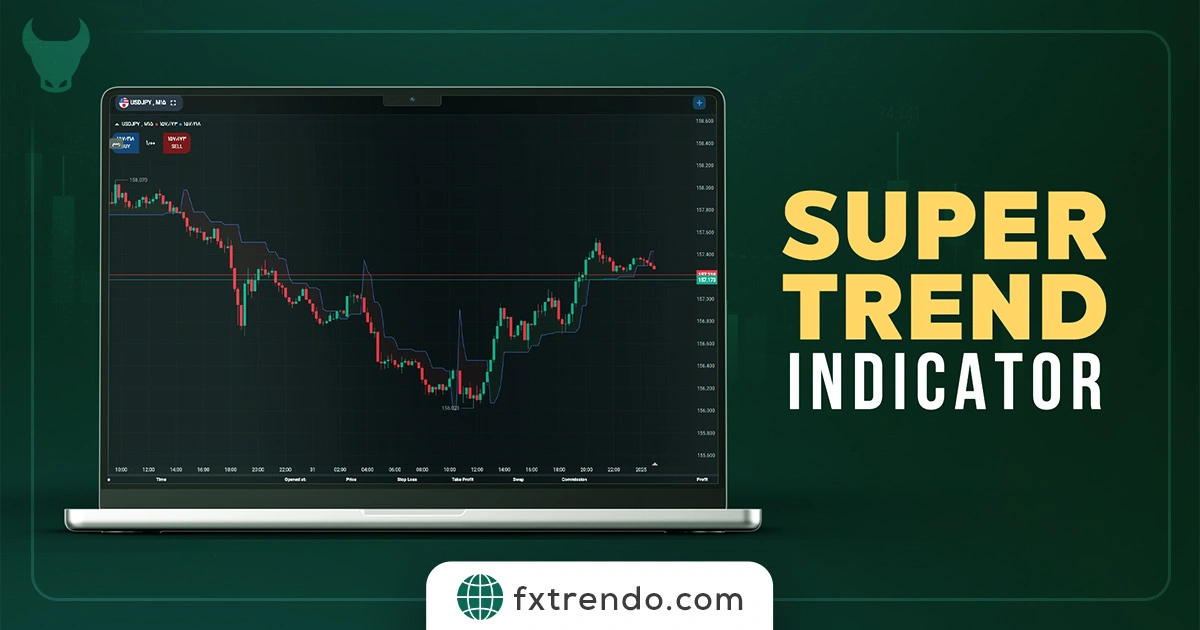- The concept of hedge in Forex
- Advantages and disadvantages of hedging in trades
- How to effectively use hedging by traders and investors
What is hedging in forex trading?
Hedging in the forex market is a trading strategy that includes opening a position to compensate for possible losses from another position. This technique helps protect your trades from potential losses, especially in volatile markets. Hedging allows you to limit your risk and is done in several ways.
Why should you use hedging in trading?
The forex market is very volatile and can be affected by various factors such as economic news, political events, and market sentiment. These factors can cause sudden and significant price movements that lead to losses for traders. You can protect your capital against these unexpected market fluctuations by using a hedging strategy in trading and potentially minimizing your losses.
Hedge strategies in the forex market
There are different ways to hedge the forex market, and each has advantages and disadvantages. Here are some of the most common strategies used in forex trading:
- Direct hedge
- Multiple hedges
- Hedging with option trading
- Hedging with futures contracts
- Hedging with forward trading
- Advanced Strategy: Delta Hedging for Position Balance
- Volatility Hedging Strategy for Highly Volatile Markets
- Hedging with CFDs
We explain these strategies further in the article.
1) Direct Hedge
Direct hedging consists of opening a position in the opposite direction of the existing trade. For example, when you have a buy position in the EUR/USD currency pair, you can open a sell position in the same currency pair. That way, if the EUR/USD price drops, your short position will offset the losses from your long position. This strategy is a simple and effective way to hedge your trading risk, but it can be costly for the trader. You have to pay the spread twice (the difference between the bid and ask price) , and this can reduce your profit.
2) Multiple hedges
Another way of hedging in forex trading is to trade multiple currency pairs simultaneously. You can reduce your risk by trading two or more currency pairs that are negatively correlated. For example, if you have a buy position in the EUR/USD currency pair, you can open a buy position in USD/JPY. If the EUR/USD price falls, the USD/JPY price will likely rise and cover your loss. Hedging multiple currency pairs can be more cost-effective than direct hedging. However, it requires a good understanding of currency correlations. You must select negatively correlated currency pairs, meaning they often move in the opposite direction.
Read More: What Is Correlation In Forex? The Role Of Correlation In Trading
3) Hedging with option trading
Hedging using option trading involves buying or selling option trade contracts to protect your trades. Options trading gives you the right to buy or sell a currency pair at a specific price (agreed price) and time (expiration date) without obligation. For example, if you have a long position in the EUR/USD currency pair, you can buy a sell option contract (put) at a lower agreed price. If the EUR/USD price falls, the option trade gives you the right to sell the currency pair at a higher agreed price, limiting your loss. Hedging using options trading can be a more flexible and cost-effective way to hedge your trades. However, it requires a good knowledge of option trading.

4) Hedge with futures contracts
Hedging with futures contracts involves buying or selling a currency pair at a specified price and time in the future. This way, you can lock in your trades’ prices and reduce your exposure to market fluctuations. For example, when you have a long position in the EUR/USD currency pair, you can enter into a futures contract to sell the currency pair at a specified price and time in the future. Thus, you can still sell the currency pair at a higher price if the EUR/USD price drops. Hedging with futures contracts can be a more predictable way to hedge your trades. However, it requires good knowledge of futures contracts and the ability to predict future market conditions correctly.

5) Hedging with forward trading
A forward trading strategy involves profiting from the difference in interest rates between two currencies. Traders borrow in a currency with a low-interest rate and invest in a currency with a high interest rate to profit from the difference in interest rates. This strategy is usually used for hedging, as the gain can offset potential losses from adverse currency movements. For example, when a trader expects the Japanese yen to weaken against the US dollar, he can borrow the yen at a low interest rate and invest in the US dollar at a higher interest rate. Profits from the US dollar can offset losses even if the yen strengthens.

6) Advanced Approach: Delta Hedging for Position Stability
Delta hedging is a sophisticated technique used in hedging forex, primarily by institutional investors and experienced traders. This forex hedging strategy involves using derivatives, such as options, to minimize a position’s sensitivity to market price movements by keeping the Delta value close to zero. When explaining what hedging forex means, delta hedging serves as a clear example of managing risk through offsetting positions rather than closing the original trade. Because market prices fluctuate constantly, the Delta also changes, requiring ongoing adjustments. As a result, this forex hedging strategy demands advanced knowledge, precise execution, and continuous market monitoring to remain effective.
7) Volatility Hedging for Unstable Market Conditions
In periods of intense market fluctuations, volatility hedging stands out as one of the most effective forex hedging strategies. Rather than focusing on predicting price direction, this approach concentrates on managing changes in market volatility itself. Traders often rely on tools such as options or a combination of multiple positions to shield their portfolios from sudden spikes or drops in volatility. When defining what hedging in Forex involves, volatility hedging is especially relevant during times of economic announcements or geopolitical events that trigger uncertainty. Among forex hedging strategies, this method is valued for helping traders protect capital, remain resilient in unstable markets, and maintain stronger control over risk exposure.
8) Hedging with CFDs
Hedging with CFDs is a flexible approach to managing risk in Forex, enabling traders to open both long and short positions at the same time without owning the underlying asset. By placing an opposing CFD trade, a trader can create a forex hedge that helps reduce or even offset the risk of the primary position. When explaining what hedging in Forex means, CFD hedging stands out as a practical solution for retail traders who prioritize short-term risk control. This form of Forex hedge is widely used because of its fast execution and broad range of tradable instruments, although it requires close attention to spreads, fees, and overall trading costs.
Practical Example of Hedging in Forex Trading
In this section, we walk through a clear, step-by-step example to explain the hedging meaning in forex and demonstrate how a hedging trading strategy can help protect a trader’s capital during high-risk market conditions.
Imagine the EURUSD pair is showing a short-term bullish trend, and based on your technical analysis, you open a buy position at 1.1000. You set your stop loss at 1.0960 and your take profit at 1.1080, following proper risk management rules. At this point, the trade is straightforward and no hedge is in place. However, a challenge arises when a major economic announcement such as NFP or CPI is about to be released, increasing the likelihood of sudden and unpredictable volatility. This is where understanding what does hedging mean in forex becomes essential.
Instead of closing your original buy trade, you decide to apply a hedging trading strategy to manage the upcoming news risk. You open a sell position of the same size slightly below your entry point, around 1.0990. Now, you are holding both a buy and a sell position on the same currency pair. This setup clearly illustrates the hedging meaning in forex: reducing exposure by creating an offsetting position rather than exiting the market completely.
Once the news is released, volatility spikes. If the price drops sharply, for example to 1.0940, the buy trade moves into a loss, but the sell trade gains value and offsets much of that loss. As a result, the overall impact on your trading account is limited, possibly keeping you near breakeven. When a bearish continuation or reversal is confirmed, you can close the buy trade and allow the sell position to continue independently. This shows that hedging in Forex is not just about limiting losses, but also about adapting intelligently to changing market direction.
Conversely, if the news supports your original bullish outlook and price rises toward 1.1060, the buy trade generates profit while the sell trade temporarily loses value. Once the breakout and trend direction are confirmed, you can close the sell position—the hedge—and let the buy trade run toward its target. This scenario perfectly answers what does hedging mean in forex: a professional risk management technique where the hedge is only maintained during periods of uncertainty and removed once the market becomes clearer.
Hedging Advantages and Disadvantages in Forex Trading
While hedging can be an effective risk management tool, it has advantages and disadvantages. Here, we will discuss the advantages and disadvantages of hedging strategies in forex trading.
The advantages of this strategy are as follows:
- Risk reduction
- Increased flexibility
- Reducing stress
- Diversification
Read on for the description of these benefits.
Risk Reduction: The main advantage of hedging in trading is its ability to reduce risk. Traders can protect their capital against potential losses by entering opposite positions in different currency pairs. For example, when a trader has a long position in the EUR/USD currency pair, he can reduce his risk by taking a short position in the USD/CHF currency pair. This way, if the EUR/USD currency pair drops, its losses can be offset by the profits of the USD/CHF currency pair.
Increased flexibility: Hedges allow traders to be more flexible in their trading strategies and to take both long and short positions simultaneously, enabling them to profit in ascending and descending markets. This flexibility can be helpful, especially in uncertain market conditions.
Reduce stress: Forex trading can be very stressful, especially when traders face potential losses. A hedge can help reduce stress by creating a sense of security. Knowing that a hedge trade exists can give traders peace of mind, allowing them to make rational decisions based on market analysis rather than succumbing to fear or greed.
Read More: Forex Trading Psychology (The importance of psychology in trading
Diversification: Hedging allows traders to diversify their portfolios and spread the risk across different currency pairs. Traders can reduce dependence on a single currency pair and potentially minimize losses by entering multiple currency pairs. Diversification is a fundamental principle of risk management and can help protect traders against unexpected market movements.
The disadvantages of this strategy are as follows:
- Increasing complexity
- Higher fees
- Reduced profit potential
- Increased required margin
Further, we explain these disadvantages in detail.
Increased complexity: Hedging strategies can be complex and require a thorough understanding of the forex market. Traders should carefully analyze the correlation between currency pairs and choose suitable positions to hedge their risk. This complexity can be daunting for inexperienced traders and potentially cause errors and losses.
Higher fees: Hedging strategies often include additional fees such as spreads, commissions, and switching fees. These costs can reduce overall profit returns. Traders must carefully consider the costs associated with hedge trading and ensure that the potential benefits outweigh the costs.
Reduced profit potential: While hedging can protect a trader’s capital against loss, it can also limit profit potential. When traders hedge positions, they limit their potential profit, as part of the profit in one position is offset by a loss in another. Traders must weigh the benefits of reducing risk against the possible limitation of profit potential.
Increased required margin: The hedging strategy needs a higher required margin as traders must have more capital in their trading accounts to take additional positions. required margin can limit the capital and number of trades a trader can make, potentially reducing profit opportunities
How do you use hedging in trades?

Here, the steps you should take to cover the risk in your trades are as follows:
Step 1: Determining the risk
Before hedging a trade, you must determine the risk you want to hedge against. For example, when you have a long position in the EUR/USD currency pair and are concerned about the risk of the euro declining against the dollar, you can hedge against this risk.
Step 2: Choose a hedging strategy
Select a hedging strategy after determining the risk you want to hedge against. Earlier in this article, we introduced different hedging strategies in trading.
Step 3: Open a position
To hedge, you should open a new position in your current position’s opposite direction. For example, when you have a long position in the EUR/USD currency pair, you can hedge by opening a sell position in the same currency pair.
Step 4: Monitor positions
Once you’ve opened your primary and hedging positions, you should monitor them to ensure they perform as expected. If the market moves in your original position’s opposite direction, the hedge position should cover the loss.
Step 5: Close positions
When the hedging position reaches its target, you should close it. If the market moves in your favor, you can close the hedge position and let the original one run its course. If the market moves against your analysis, you can close both positions to limit losses. Further, we will explain how to exit the hedge trade.
How to exit a hedge trade in the forex market?

Exiting a forex hedging trade can be complicated, especially if the trader does not have a clear exit strategy. Here are some steps traders can take to exit a forex hedge:
1. Assess market conditions
The first step to exiting a hedge trade is to assess current market conditions. This review includes price movement and market sentiment analysis that can affect a trader’s position. Traders should also consider upcoming economic events or news releases that could affect the market.
2. Decide on an exit strategy
Once traders have assessed market conditions, they must decide on an exit strategy. This step involves determining the price at which they want to close their positions. Traders should consider risk tolerance, profit-taking areas, and other relevant aspects when deciding on an exit strategy.
3. Close the hedge trade
After determining the exit strategy, traders should close the hedging position. This step involves selling the currency pair used to protect the original position. For example, when a trader opens a sell position in USD/JPY to protect a buy position, he must close the sell position by buying back the currency pair.
4. Close the original position
After the hedge position is closed, traders must close the original position. This step involves selling the currency pair used to open the original position. For example, if a trader has a long position in USD/JPY, he should close the position by selling the currency pair.
5. Monitor the market
Traders must continue monitoring the market to ensure their exit strategy is successful after closing the positions. If necessary, traders may need to adjust positions or exit strategies as market conditions change.
The Psychological Impact of Hedging on Emotional Control in Trading
In addition to its technical role in risk management, hedging in Forex has a significant psychological impact on traders and can reduce the emotional pressure caused by market volatility. When a trader knows there is a protective layer against sudden price movements, the fear of large losses decreases, and decision-making becomes more rational. In fact, hedging in Forex helps traders avoid emotional reactions such as closing trades too early or emotionally adjusting stop losses, allowing them to evaluate market conditions with greater calm and clarity.
On the other hand, if hedging in Forex is used without a clear mental plan, it can lead to confusion and hidden stress, as the trader may hesitate between two opposing positions and delay decision-making. Therefore, the psychological effect of hedging in Forex is positive and constructive only when the trader knows in advance under which conditions the hedge will be activated and when it will be closed. Having this mental clarity helps keep emotions under control and ensures the trader’s focus remains on proper trade management, rather than short-term fear or greed.
Tips for successful hedging in Forex trading
Here, we present the points you must remember for successful hedge trading in the forex market. These points include:
- Understanding correlations
- Monitoring economic events
- Proper risk management
- Trial and correction
Further, we will explain these points.
Understanding Correlations: Before implementing any hedging strategy, it is crucial to understand the correlation between currency pairs. Positive correlations mean that two currency pairs move in the same direction, while negative correlations indicate that they move in the opposite direction. Traders can identify currency pairs with strong correlations and design adequate hedging strategies by analyzing past price data and studying market trends.
Monitoring economic events: Economic events and news releases can significantly impact currency prices. To foresee potential market movements, traders who use hedges must keep up with economic calendars and news events. Traders can adjust their hedge positions accordingly and minimize the risk of loss by being aware of future events.
Read More: Forex economic calendar analysis
Proper risk management: Traders must not consider hedging as a foolproof strategy but as a capital and risk management tool. Setting stop-loss and take-profit orders is crucial to limit possible losses and guarantee profits. Traders should also determine the appropriate lot size for their hedge positions based on risk tolerance and account balance.
Trial and correction: As with any trading strategy, hedging requires practice and improvement. Beginners should test their hedging strategies on a trial or demo account before implementing them on a real account. Traders can increase their chances of success by analyzing the performance of hedging positions and adjusting their strategies.
Summary
A hedge is a capital management technique traders use to minimize risk in the forex market. This strategy involves entering positions in the market that neutralize the existing position and thereby reduce risk. Hedging is a helpful technique for traders to protect profits and minimize losses. However, it is essential to be aware of the associated costs.








